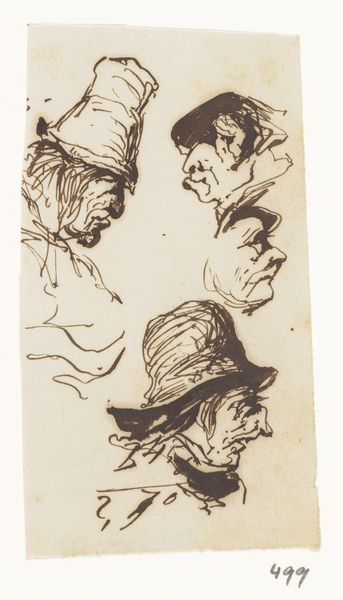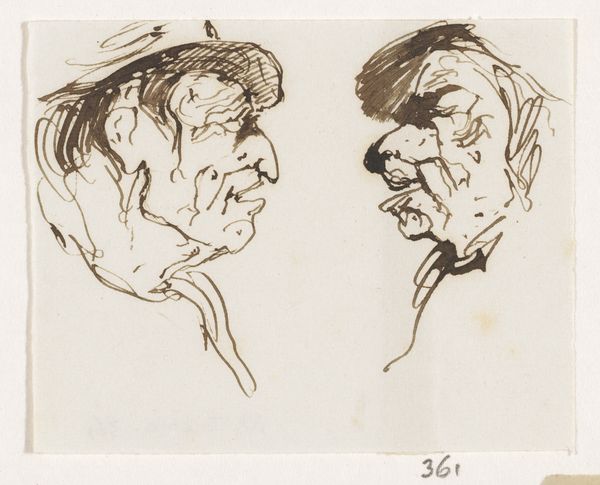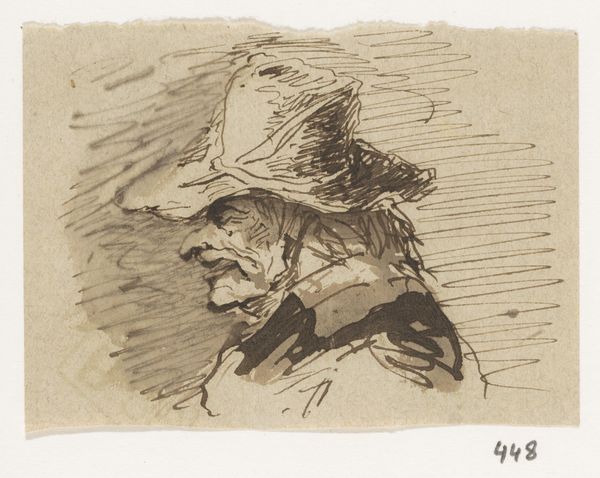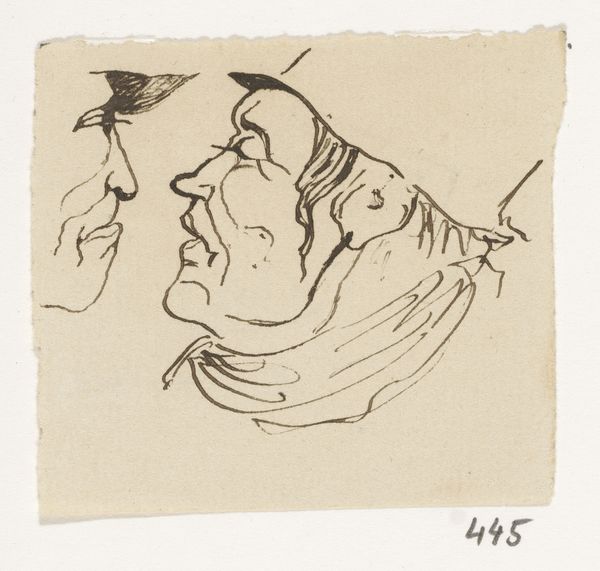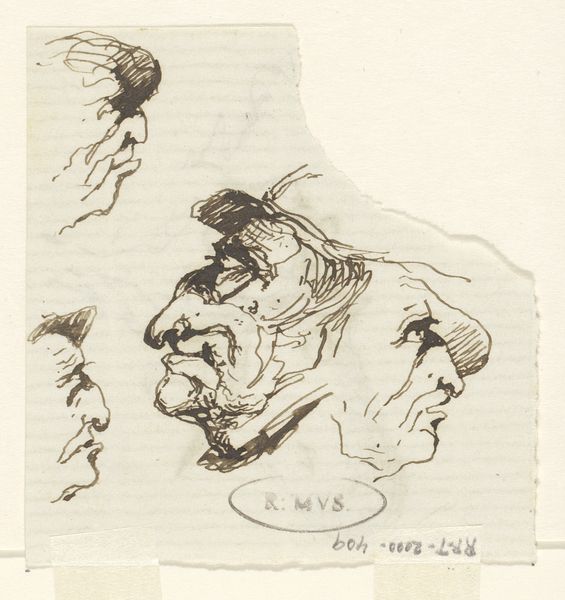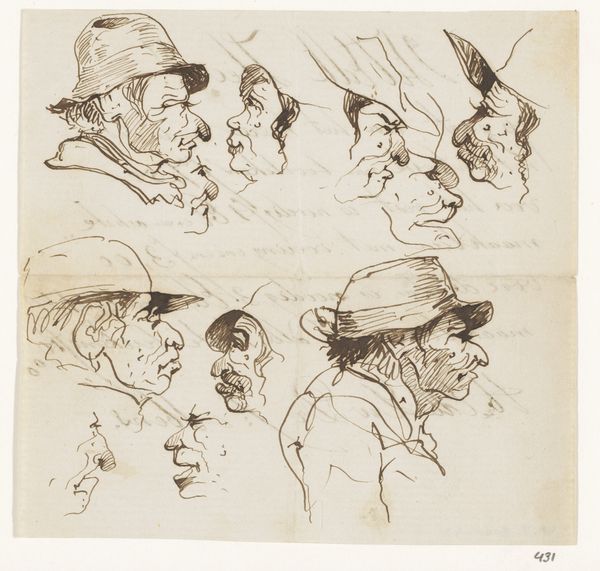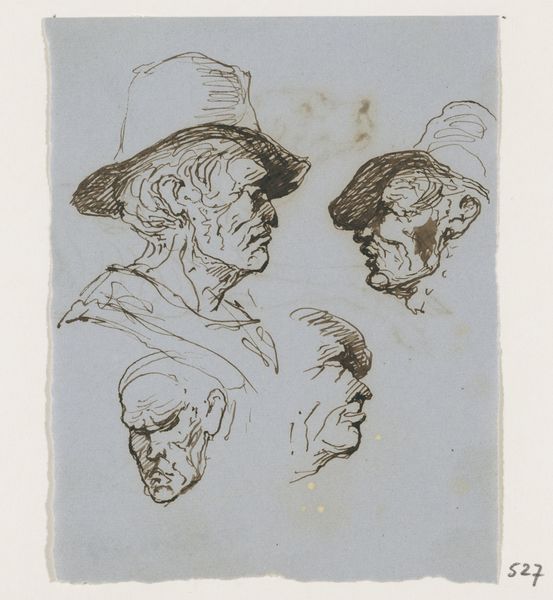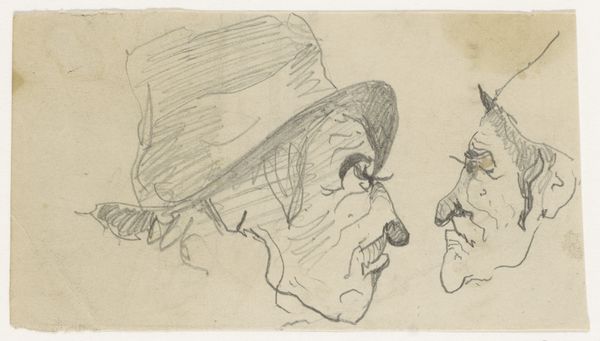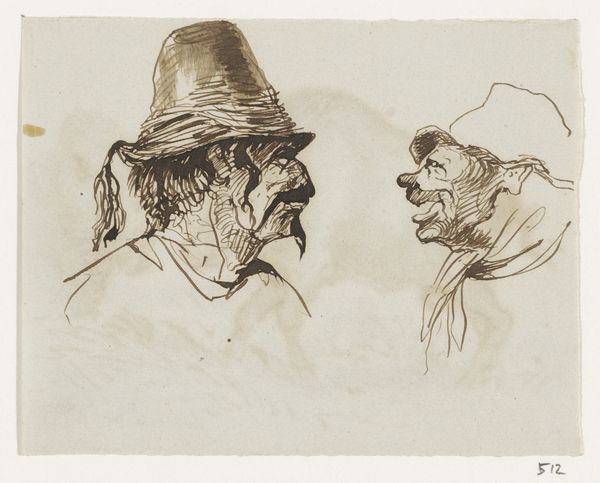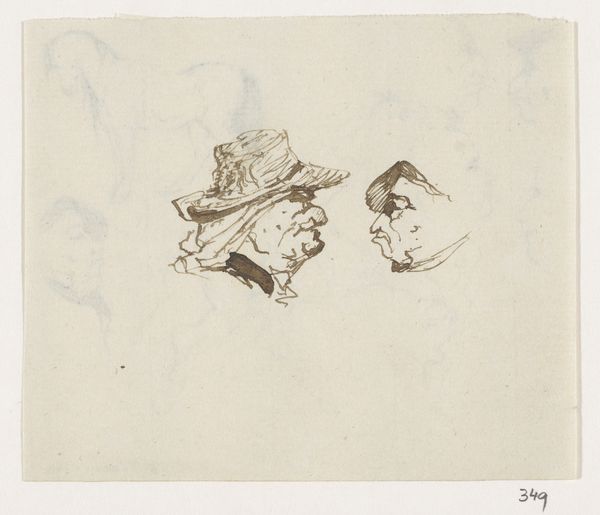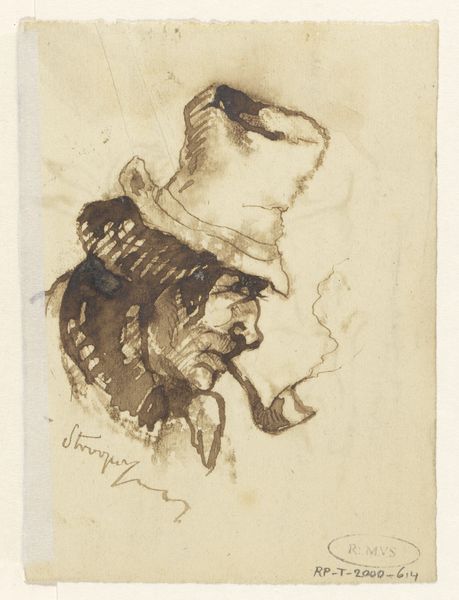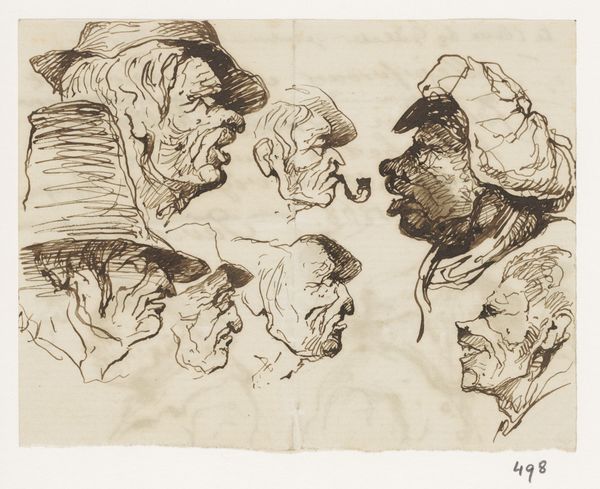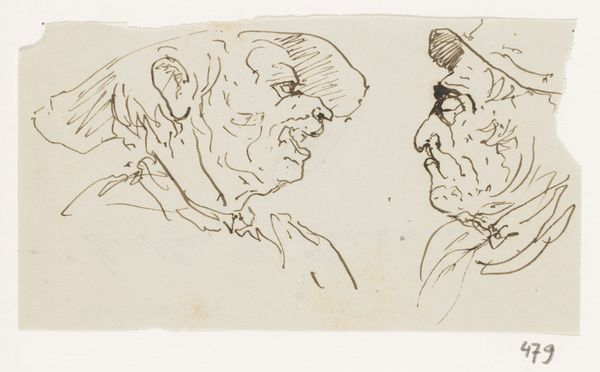
drawing, paper, ink
#
portrait
#
drawing
#
pen sketch
#
figuration
#
paper
#
ink
#
line
#
realism
Dimensions: height 65 mm, width 70 mm
Copyright: Rijks Museum: Open Domain
Curator: These quickly drawn profiles, titled "Koppen," are from the hand of Johannes Tavenraat, dating somewhere between 1840 and 1880. They're rendered in ink on paper, currently held at the Rijksmuseum. Editor: My immediate reaction is how raw and unflattering these portraits are. It feels almost…satirical. Are we meant to find some commentary here? Curator: Perhaps. Considering Tavenraat's output, the focus really shifts towards understanding the paper and ink he chose, and why. Was there a ready availability of such materials? Was there something about the trade routes to this paper-type influencing his practice? These questions highlight the very tangible aspects of the art-making process itself. Editor: But to simply overlook the humanity conveyed seems almost negligent. There's an undeniable commentary on aging, perhaps on social status signified by the different headwear… Even a little on the changing facial fashions among men of this era. Couldn’t Tavenraat be making a point about their positions in society, reflected through the artistic eye? The Rijksmuseum surely selected this for its significance to a broader Dutch identity. Curator: But what *is* Dutch identity at this point? It's constantly constructed and negotiated. Focusing solely on these readings distracts from more interesting questions: Where did the artist acquire his ink? What kind of pens did he employ? Analyzing his access to the very basics informs us directly about artistic creation in that period. The availability of drawing materials tells its own tale. Editor: I see your point about grounding it, literally, in its making. Yet, even those mundane decisions—ink, paper—don't happen in a vacuum. His choices become a subtle critique or endorsement through their social context. Curator: Indeed, these mundane objects can point to hidden relationships of labor and consumption in Dutch society at the time, which is so compelling here. Editor: Well, seeing these drawings has certainly shed light on the various lenses through which we can interpret art and society, past and present. Curator: It’s about recognizing that these sketches are more than just pictures; they are vestiges of an entire production process.
Comments
No comments
Be the first to comment and join the conversation on the ultimate creative platform.
